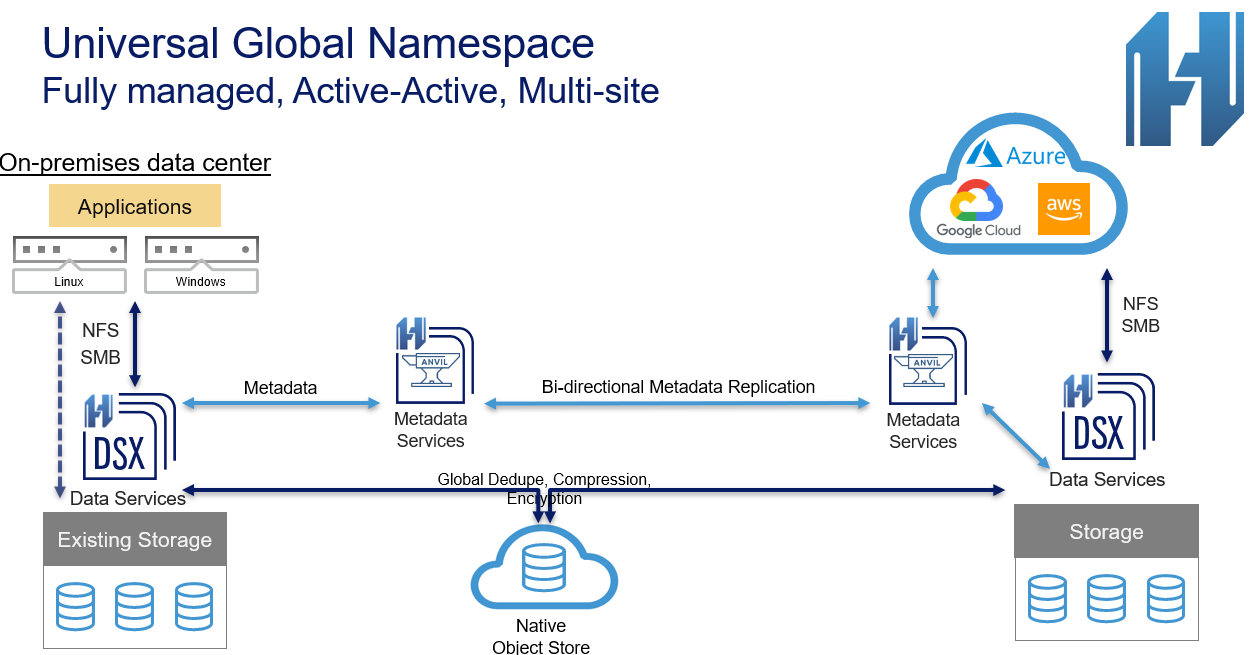The Function of Universal Cloud Storage Services in Disaster Healing Planning: A Comprehensive Guide
In the world of catastrophe recovery planning, the application of universal cloud storage services has actually become a crucial element for organizations intending to protect their information and make certain company continuity in the face of unforeseen interruptions. The capability to securely save vast amounts of information off-site, accessible from anywhere at any moment, presents an engaging remedy to the obstacles posed by typical on-premises storage space systems. As innovation continues to progress and organizations increasingly count on electronic properties, the role of universal cloud storage space services in catastrophe healing preparation can not be overemphasized. The seamless combination of cloud services into a comprehensive disaster healing strategy uses a level of flexibility, scalability, and effectiveness that is exceptional, but it also brings forth a host of factors to consider and intricacies that require a thoughtful strategy.
Importance of Cloud Storage in Catastrophe Recovery
Cloud storage plays a vital role in disaster recovery strategies because of its capacity to firmly store and promptly bring back vital data and applications in times of dilemma. When organizations deal with unanticipated calamities such as cyber-attacks, natural catastrophes, or system failings, having a reliable cloud storage space option can make all the distinction in making certain organization continuity.

In addition, cloud storage supplies improved data defense with features like file encryption, redundancy, and automated back-ups. These protection gauges aid guard information versus prospective threats and ensure its stability and accessibility during healing processes. By leaving critical data to cloud storage, companies can mitigate threats, decrease downtime, and speed up the remediation of necessary solutions in case of a catastrophe.
Benefits of Universal Cloud Provider
Incorporating universal cloud solutions into catastrophe recovery planning enhances the effectiveness and resilience of business information management approaches. One primary advantage is the scalability used by cloud services, permitting organizations to easily adjust their storage requires based upon demands. This flexibility makes sure that companies can promptly adjust to changing problems, such as boosted information quantities throughout disaster recovery circumstances. In addition, universal cloud services give an affordable solution for catastrophe healing preparation by eliminating the requirement for expensive on-premises framework and upkeep. Organizations can leverage the pay-as-you-go model of cloud services, paying just for the resources made use of throughout the recovery process. Global cloud services use enhanced accessibility, allowing workers to access essential data from anywhere, facilitating remote job throughout recuperation efforts. The safety and security includes ingrained in cloud solutions additionally add to the advantages, guaranteeing that data continues to be protected and encrypted, safeguarding versus data loss or breaches - universal cloud storage. Overall, the fostering of universal cloud services in catastrophe recovery preparation can dramatically reinforce a company's preparedness and strength when faced with unanticipated events.
Challenges in Implementing Cloud Storage Space
Implementing global cloud storage services offers organizations with numerous obstacles that need cautious consideration and tactical planning. One of the main obstacles is information safety and security and personal privacy concerns. Turning over sensitive information to a third-party cloud supplier increases apprehensions concerning unapproved accessibility, data breaches, and compliance with data security guidelines. Organizations has to extensively examine the protection measures and methods implemented by the cloud company to alleviate dangers efficiently.
One more significant challenge is the potential for downtime and solution interruptions. Dependence on cloud storage space implies companies are vulnerable to connectivity concerns, server blackouts, or maintenance interruptions that could affect access to essential information and applications. Creating a robust continuity plan, consisting of repetitive back-ups and failover systems, is important to make certain company operations can proceed perfectly throughout unanticipated cloud service interruptions.
Additionally, scalability like this and expense administration posture difficulties in cloud storage space implementation. Organizations has to accurately anticipate their storage space needs to prevent over-provisioning or underutilization, which can cause inadequate resources or unneeded costs. Implementing reliable tracking and source appropriation strategies is vital for maximizing cloud storage expenses while fitting future development requirements.
Best Practices for Catastrophe Recuperation Preparation
When strategizing for calamity recovery planning, precise interest to information and thorough danger evaluation are critical. Among the most effective methods for reliable catastrophe recovery preparation is to establish clear recovery objectives. These goals ought to lay out the wanted recovery time purposes (RTOs) and healing point goals (RPOs) for various systems and data collections. By plainly specifying these objectives, companies can prioritize their recuperation initiatives and allocate sources properly throughout a catastrophe.
One more key technique is to regularly examine the calamity healing strategy to ensure its effectiveness. Performing tabletop exercises, simulations, or major drills aids identify voids in the strategy, allows staff to familiarize themselves with their duties and duties, and verifies the overall preparedness of the organization to react to a calamity.
Furthermore, keeping off-site backups in a secure and dependable place is vital. Keeping back-ups in the cloud gives an added layer of protection versus on-premises calamities and ensures that data can be swiftly brought back in case of an emergency. Consistently upgrading the calamity and evaluating recovery strategy to show changes in the IT setting, organization operations, or regulative requirements is also vital to guarantee its importance and performance when needed.
Secret Considerations for Cloud Storage Integration
Making use of cloud storage space solutions in catastrophe recuperation preparation requires a careful evaluation of key factors to consider to make sure smooth assimilation and ideal data security. One essential factor to consider is data safety and security. When integrating cloud storage space right into disaster healing plans, it is necessary to analyze the safety and security gauges carried out by the cloud provider. link File encryption protocols, gain access to controls, and compliance accreditations are vital elements to examine to safeguard sensitive information.
One more vital factor to consider is information access and recuperation rate. Organizations has to examine the bandwidth capacities of their net link to guarantee quick information access during a calamity. Furthermore, examining the service provider's service level arrangements (SLAs) regarding uptime and information availability is important to guarantee that information can be accessed without delay when required.

Final Thought
Finally, global cloud storage services play a vital duty in disaster recovery planning by supplying countless advantages such as scalability, cost-effectiveness, and accessibility. Regardless of obstacles in implementation, best techniques and careful considerations can help organizations successfully incorporate cloud storage space right into their calamity recovery methods. It is essential for companies to prioritize the fostering of cloud blog storage solutions to improve their calamity readiness and make certain organization continuity when faced with unexpected events.
In the world of disaster healing preparation, the use of universal cloud storage space services has actually emerged as a critical part for organizations intending to protect their data and make sure service connection in the face of unexpected disruptions. As innovation continues to evolve and organizations increasingly depend on electronic assets, the duty of global cloud storage services in disaster healing planning can not be overemphasized.Making use of cloud storage space solutions in calamity recuperation preparation requires a careful assessment of vital factors to consider to make sure smooth assimilation and optimum information security. When incorporating cloud storage right into catastrophe healing strategies, it is essential to evaluate the safety and security measures executed by the cloud service supplier. By carefully taking into consideration these vital factors, organizations can properly integrate cloud storage space solutions right into their calamity recovery plans and boost their overall resilience.
 Ralph Macchio Then & Now!
Ralph Macchio Then & Now! Tony Danza Then & Now!
Tony Danza Then & Now! Alfonso Ribeiro Then & Now!
Alfonso Ribeiro Then & Now! Daniel Stern Then & Now!
Daniel Stern Then & Now! Justine Bateman Then & Now!
Justine Bateman Then & Now!